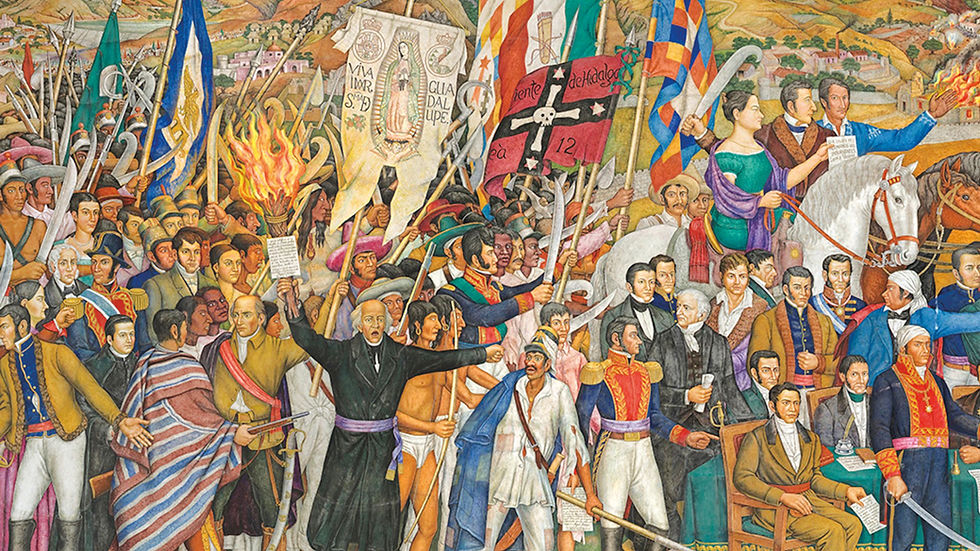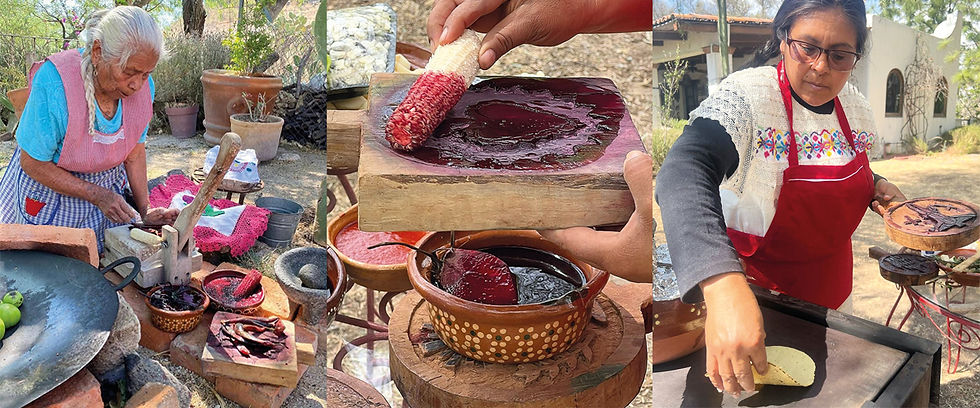Hi México, Let’s Talk!: The Mexican Cry! El Grito
- Camie Fenton
- 10 sept
- 3 Min. de lectura

By Francisco J. Báez
In a study published in PLOS Biology in 2021 by Sascha Frühholz, professor of psychology at the University of Zurich, Switzerland, “the cry”, “shout” or “scream” was studied in an acoustically isolated booth. The result? Six acoustically distinct categories of screams were identified: pain, anger, fear, sadness, joy, and passion. But to the researchers' surprise, cries of joy were the most prevalent response.
These studies, which focus primarily on speech and language, “define us as humans”. “The scream” is just an instinctive response to acute pain, intense anger, or imminent danger, but when we dive in an ocean of people, we release our tensions and bond collectively. Positive shouts of joy are expressed in contexts where people enjoy being… and that feeling spreads collectively. And when Mexicans add passion to a shout of joy, it moves from the realm of the mere human to the familiar.
When we Mexicans talk about “screaming”, we know that it’s not just a matter of volume, but about expressing our pride, releasing our frustrations, and relieving our stress. In our families’ fiestas we’d bang drums, blow whistles, shake rattles - matracas -, blow horns - cornetas -, and even clink glass bottles.
We could then say that we “shout for everything” with energy and enthusiasm. We raise our voices to sell all kinds of goodies from tamales, camotes (honey coated sweet potatoes), elotes con mayonesa (corn on the cob with mayo), Gas L.P. (Liquefied Petroleum Gas), fierros viejos (rusty old metal stuff), etc. We Mexicanize the shout, because we don't just “shout for the sake of shouting”. We yell to express how we feel, and that’s why we are proud to say that we “shout with all our hearts.” In addition, as part of our culture, we add up strong patriotic and festive connotations.
The well-known Grito de Dolores (which literally means “The cry of pains, or aches or sorrows”), uttered by the catholic priest Miguel Hidalgo after ringing a bell, had a profound spiritual and social meaning on the early morning of September 16th, 1810. And although no one knows what he actually said, it is codifies as his “loud voice speech” delivered an energetic, passionate, and angry reflection: “My children… Will you recover the lands that ‘Gachupines’ stole from your ancestors three hundred years ago? Will you be slaves to Napoleon?
Will you defend your religion, your homes, and your rights as true patriots?”
To which the people shouted unanimously and courageously: "We will defend ourselves to the end! Long live the homeland! Long live religion! Long live our Lady of Guadalupe! Long live México! Death to bad government!"
And if all of the above “passionate cries” were not enough, our own cinema helped to popularize our shouting through numerous films, some of which are:
La Llorona, from 1933. One of the oldest and most relevant stories in Mexican culture, especially in Guanajuato and Puebla states. It tells of a woman's voice that, with great sobs and sighs, cried out loudly, ¡Ay, mis hijos! (Oh, my children!). The warning was clear: “If you hear her nearby, it’s because she is far away; and if you hear her far away, it’s because she is closer than you think”. Since pre-Hispanic times, it was an omen of misfortune or death and was associated with presages that supposedly occurred before the Spanish conquest and predicted the end of the Mexica empire of Tenochtitlán.
Primero soy Mexicano, from 1950 revolves around a young man who returns to México after studying medicine in the U.S. and shows contempt for his Mexican roots and his father, an illiterate landowner. The film, which goes not without shouting, explores themes such as culture shock, Mexican identity, and national pride.
A Toda Máquina, from 1951 is known for its dramatic and action-packed scenes, where the characters, two traffic cop friends, compete for female conquests and perform multiple motorcycle stunts. They interact by arguing and shouting at each other, which only adds to the intensity of the chases and fights.
Since 1810, and in every city hall in our nation, this is how Mexicans experience “their most emotional cry”: El Grito del 16 de Septiembre. Because when we mix passion and joy, we cry out from the heart: “¡Qué Viva México!”
Francisco J. Báez is ‘The Immersion Guy from Hi-México!’ Accelerated English for your House’s staff and Mastering Spanish Sounds forEnglish Speakers:
Whatsapp 415 111 7193
.png)








Comentarios